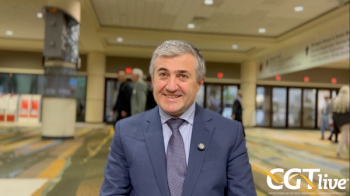
Dr. Villa on Induction Therapy With Bendamustine/Rituximab in MCL
Diego Villa, MD, MPH, discusses a retrospective analysis of bendamustine and rituximab as induction therapy in patients with transplant-eligible and -ineligible mantle cell lymphoma.
Diego Villa, MD, MPH, clinical associate professor, Division of Medical Oncology, Department of Medicine, The University of British Columbia, discusses a retrospective analysis of bendamustine and rituximab (Rituxan; BR) as induction therapy in patients with transplant-eligible and -ineligible mantle cell lymphoma (MCL).
The study suggests that BR is an effective induction regimen in transplant-eligible and -ineligible patients with MCL, explains Villa. Results were in line with data from the phase III STiL NHL-1 and BRIGHT trials that showed improved progression-free survival with BR compared with standard R-CHOP.
In the analysis, the 3-year rate of PFS with BR was 62.8% (95% CI, 62.4-63.6). Although patients whoreceived R-CVP were included in the analysis, the trend toward improved overall survival favored the use of BR compared with R-CHOP in transplant-ineligible patients.
Among the 89 patients ≤65 years of age who received BR, 67% underwent autologous stem cell transplant (ASCT). BR was associated with a numerical improvement in PFS versus R-CHOP in this group of patients. However, investigators could not claim statistical significance.
These results support the use of BR in transplant-ineligible patients with MCL. In transplant-eligible patients, BR is can be considered reasonable induction regimen, concludes Villa.
Newsletter
Stay at the forefront of cutting-edge science with CGT—your direct line to expert insights, breakthrough data, and real-time coverage of the latest advancements in cell and gene therapy.


















































